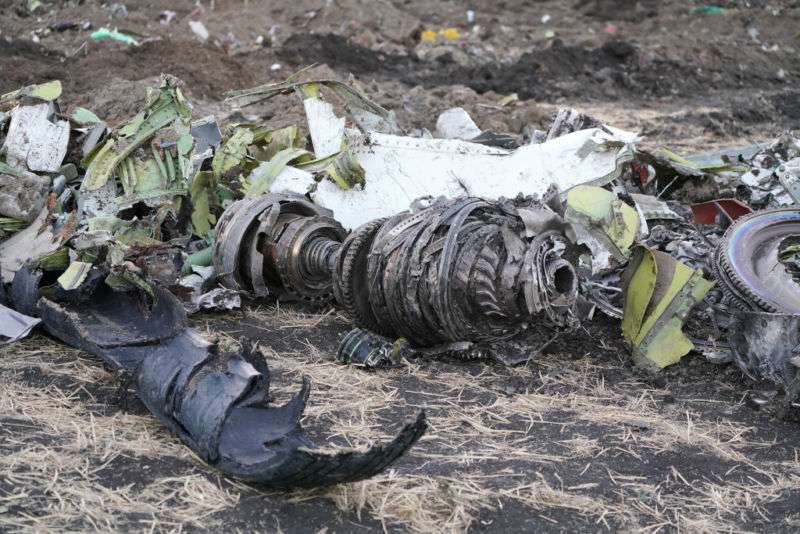
Ethiopian Air pilots turned off 737 MAX anti-stall system. Then it turned on again

The pilots of Ethiopia Airlines Flight 302 apparently followed the proper steps to shut down an errant flight control system as they struggled to regain control of the 737 MAX aircraft shortly after takeoff. But according to multiple reports, data from the ill-fated aircraft’s flight recorder revealed that the anti-stall feature of the aircraft’s Maneuvering Characteristics Augmentation System (MCAS) was triggered at least three times—and at least one time after the pilots followed the correct steps to shut it down.
Both Reuters and The Wall Street Journal report that the air crew followed procedures laid out by Boeing following the crash of a Lion Air 737 MAX in October, according to officials briefed on the initial findings of the investigation. But the pilots failed to regain control of the system, and the MCAS was reactivated again—triggering yet another automated correction of the aircraft’s stabilizers that would have pushed the nose of the plane down.
Boeing’s safety notice following the Lion Air crash noted that the MCAS’ automated adjustments to a 737 MAX’s stabilizers—the control surfaces on the tail of the aircraft that are used to change the direction of the aircraft’s flight—could be “stopped and reversed” with a thumb switch on the pilot’s yoke but “may restart 5 seconds after the [switch] is released.”
To prevent the MCAS from continually pushing the nose down in the event of bad sensor data or some other software failure, Boeing instructed pilots to deactivate the system using procedures already in place for dealing with runaway stabilizer control systems in other 737 aircraft—flipping two stabilizer trim “cutout” switches to the “cutout” position. Failure to do so could result in the system pushing the stabilizers to their movement limit—putting the aircraft into a steep dive. The pilots of the Ethiopian Airlines flight did flip the cutout switches, and they cranked the controls to attempt to regain positive stabilizer control. But they continued to have difficulty controlling the aircraft.
It is not clear at this point whether the pilots purposely reactivated the MCAS’ stabilizer control or if the software reactivated on its own after shutdown. While a Wall Street Journal source said that it appeared the pilots turned the system back on in hopes of regaining control over the stabilizers, Reuters reports that the software may have reactivated without human intervention, and further investigations of that possibility are ongoing.
In either case, the system was turned back on after the aircraft had already entered an unrecoverable dive. The aircraft crashed, killing all 157 people aboard.
If the air crew did follow Boeing’s instructions on recovering from an MCAS system failure, the information emerging from the Ethiopian Airlines crash investigation raises more questions about Boeing’s response to the Lion Air crash five months earlier and the Federal Aviation Administration’s review of that response.




